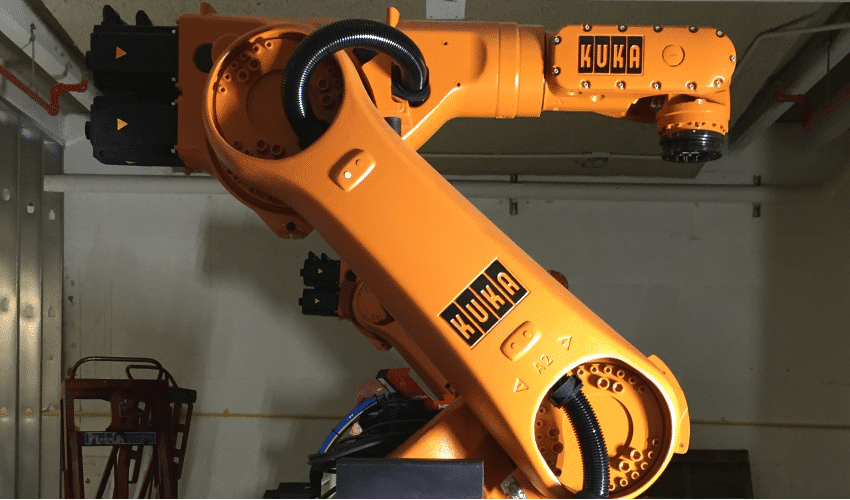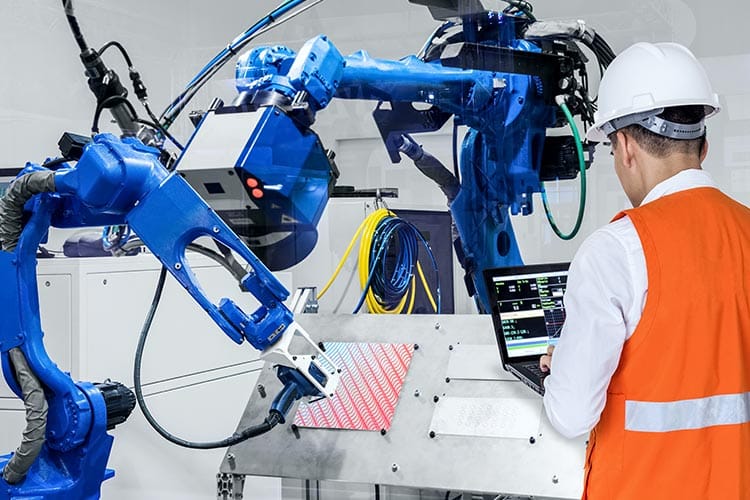For Professor Allan Shearer, educator and associate dean for research and technology at the University of Texas at Austin’s (UT Austin) School of Architecture, teaching his students to design using the latest technological developments is an essential part of helping them become well-rounded professionals. As Dr. Shearer puts it, in a field where architects take part in designing the actual tools that help them in the design process, a new generation of professionals in the field must “begin to learn to master [their] tools.”
Luckily for Dr. Shearer’s students at UT Austin, they have an incredible wealth of resources at the School of Architecture’s Technology Lab to help prepare them for the ways in which they’ll work with technology for the rest of their careers. Located in the basement of the school’s Sutton Hall, the tools within the lab are open to students throughout the academic year to learn and experiment with. While the lab includes some equally fascinating, but more expected equipment, such as 3D scanners/printers and laser cutters, there are two unique features which showcase the vast range of possibilities that exist within the further convergence of the fields of technology and architecture.

The first of these would be the Virtual Reality/Augmented Reality (VR/AR) Lab. This room, which hosts four machines each capable of running their own artificial intelligence system, was put into the building last spring and, since then, Dr. Shearer says its popularity among students has “spread like wildfire.” For many of the students, he adds, it is their first time experiencing VR/AR—although, he does mention, every class always has some “hard-core gamers” who know right away what to do with the technology.
While the VR/AR Lab is used for many classes, including one taught by Dr. Shearer himself entitled “Futures in Cities,” he mentions one course in particular, taught by his colleague Hope Hasbrouck, as an example of how the VR/AR technology has become an innovative tool to help students learn. In Professor Hasbrouck’s class, first-year graduate students worked to model a forest in other development software. Then, they imported their forest design into the VR program —and were actually able to “walk through” the landscape they created.
The second would be the two KUKA Robotics KR60 robotic arms that came to the lab about a year ago. The robotic arms opened up a wide range of opportunities for experimentation by both the students and the facility—although Dr. Shearer is quick to point out these are all conducted with the help of a full-time robotics systems manager to direct the use of this unique machinery. “There needs to be the right faculty and staff to guide the process,” he continues, “because unless the use of these types of machines becomes part of your culture, they are just dust collectors.”

The robotic arms have been used by students to create precision drawings through the inputting of code. There have even been experiments in creating a kind of “robot art” where students change a couple parameters in the script to introduce randomness and, therefore, receive a unique drawing from the arm. Students have also conducted experiments where they attach a blow-torch to the robotic arm to melt specific points in a wax structure as well as ones where they bend a variety of metals.
A highlight for Dr. Shearer, among all the experiments done so far with the robotic arms, was a set of testing protocols done with the machines to manipulate steel this past spring. Using steel plates, each roughly the size of a pizza box, students input distinct patterns for the robotic arms to engrave into the material. The success of the experiment opens up new ideas and possibilities for mass customization of structural elements—something which is not usually as easily attainable when working with heavy materials such as steel.
While the Technology Lab may be the most visual showcase of the advanced instruments the UT Austin students have at their disposal, the department’s resources extend beyond even that. The campus also has two Thermal Labs —huge insulated rooms where experiments can be done to test the energy demand, room climate conditions, and daylight provision on different types of facade materials. This has been an especially important tool in conducting research, which aims to better incorporate green technology into structural design. There are also new classrooms within the department where giant 4K screens have been installed—the heightened resolution allows guest lecturers to showcase, among other things, actual line weights in their drawings to the classes they Skype into. The university, as well, has recently begun the process of doubling the size of their rendering farm—allowing students to cycle their designs through faster and to better resolve any errors made along the way.
While Dr. Shearer, as a graduate student in the mid-90s, was taught a bit of computer programming as part of his education, he only recently has seen that type of technology knowledge become a greater part of architecture degree programs. He attributes this to the innovative instruments a new generation of designers will have at their disposal—“We are going back to teaching coding and scripting again because the tools have ramped up.” For him and the other professors at UT Austin, incorporating an understanding of technology into their curriculum has become an essential part of being a well-rounded and innovative architect. “We are not trying to make our own industrial robots, but we are finding new ways to plug in with them.”











